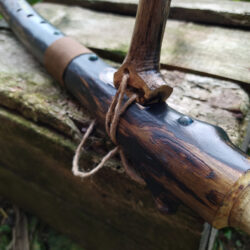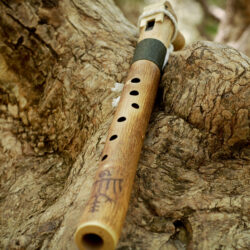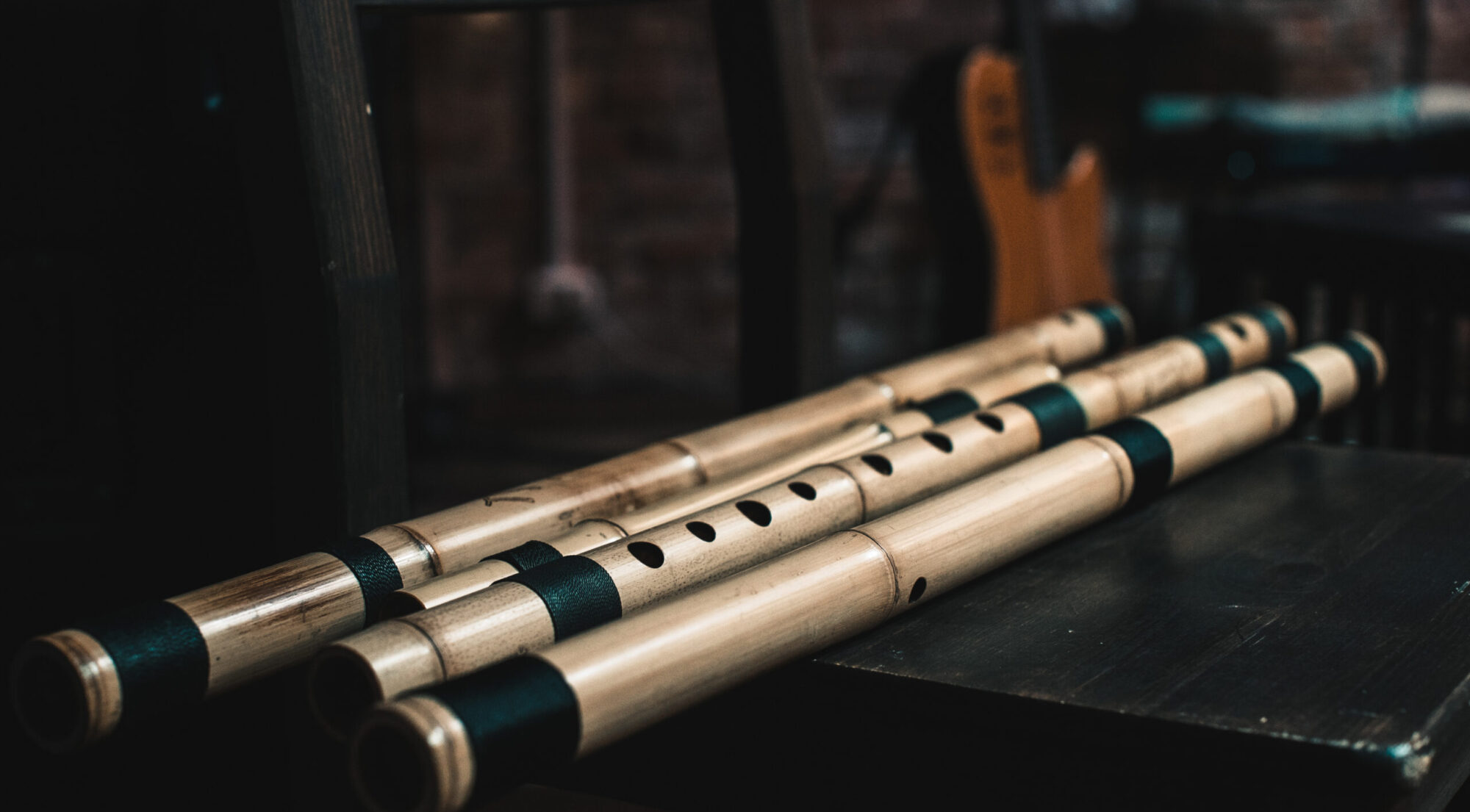-
 Wooden NAF inlays (Straight)€187.00 – €270.00
Wooden NAF inlays (Straight)€187.00 – €270.00 -
 Wooden NAF (Fork)€187.00 – €270.00
Wooden NAF (Fork)€187.00 – €270.00 -
 Wooden NAF (Straight)€187.00 – €270.00
Wooden NAF (Straight)€187.00 – €270.00
A flute with the soul and sound of a forest…
One of the main reasons why I make flutes is for the joy of making and hearing their sound. It is so enticing and rewarding to give voice to the objects I find in the woods. Sometimes it is a straightforward process, sometimes it is a puzzle. Every new flute is different and unique and none are alike. Therefore, it is very important for me to know more about your wishes to make a perfect friend for you. Working on the NAF makes me feel like a true artist. The forest and it’s sound are the two worlds where I feel completely authentic.
Fingering and tuning
Like the traditional NAF, my flutes are tuned into a minor pentatonic and have no second octave. The flute key is named after the lower note.
There are flutes with 5 and 6 holes (extended pentatonic).
Frequently used keys:
- hi-A – is a small flute with a bright and full sound. A perfect companion on a journey.
- F# – For some reason, it is considered to be a standard tuning for NAF. Why? In my opinion, the key is not very practical.
- E – is a perfect NAF, in my understanding. It has a good balance between the depth and the brightness of the sound.
- Bass-D – is a bass flute with a soft, often hissing sound. Pretty quiet.
Other keys are available on request, just ask me.
Sound
Large flutes sound deeper and softer, and small flutes – louder and brighter. Also, there is a lot of room for maneuvering and experimenting. Taste and beauty is in the eye of the beholder. Some people like a deeper sound and some – louder and brighter. So decide for yourself..
- Bright, saturated sound
- Averagely bright sound
- Soft sound with a slight hissing
- Forest whisper
Aesthetics and convenience
I try to somehow standardize the appearance of flutes I make but nature sometimes says otherwise and I usually give in 🙂 Be prepared for the flute to look different from the example in the photos. Please try to describe your expectations as accurately as possible to me so that we are on the same page.
Sometimes I use wood with defects. I guarantee that it is safe for the flute. Forest artifacts are diverse and unique. (Ex, strange knots, bends, cracks, and traces that show its natural aging) There are no two alike.
Shape
In all this variety, several basic forms are prominent:
- Straight shape. Relatively straight. What you would imagine if you heard the words “just a stick”.
- Fork shape at the end. The embouchure is made out of a knag.
- Hook. Straight flute, but with a knag on the end.
- Root. A rare beast, looks very epic and expensive.
Let me know about your preferences.
Finish
I don’t always have all the options, so we may have to compromise.
- Plain wood. This option looks minimalistic. I can decorate it with a big pyrography or draw something on it for you.
- Tinted wood. There are different variants of tinting, check out the examples and send me the link to the picture you like.
- Outer bark. I can leave the bark as is, but it usually looks better if you take off some of the top layer.
- The inner layer of the bark/tree. This option is interesting because it is usually a mystery in its appearance until the very last moment working on it
- Slightly charred wood. I really like this option.
- Strongly charred wood. This one too.
- Old wood. Such flutes look very cool but are hard to dry and to work with. This option is not always available.
Totem
Totem is a piece of emblem at the top of the flute. Sometimes totems are carved with wood into animal figures. However, wood carving is not my thing. We all like strict minimalistic forms, don’t we?
- Minimalistic. It can be either light or tinted.
- Built-in. A minimal one built deeper into the body of the flute. A flute with such design sounds a little bit more muffled than others.
- Trapeze. A simple shape with smooth edges. I try to use wood with a rich texture that looks beautiful after polishing.
- Drip. Like a trapeze, but with a rounded backside.
- Trapeze with bark.
- A drop with bark.
- Knags.
- Big knags. Not very practical, but looks stunning.
- Slice. A cool wood cross-section with rich texture.
- Ginko leaf. A composition of two halves of a wood slice and a piece of mahogany wood.
Slow air chamber size (SAC)
SAC balances out the airflow entering the flute. Flutes with large SAC have a smoother sound and are less sensitive to a change of breath. A small SAC is not only compact, but also gives you more control over the sound
- Very large
- Big
- Average
- Little
- No SAC at all.

